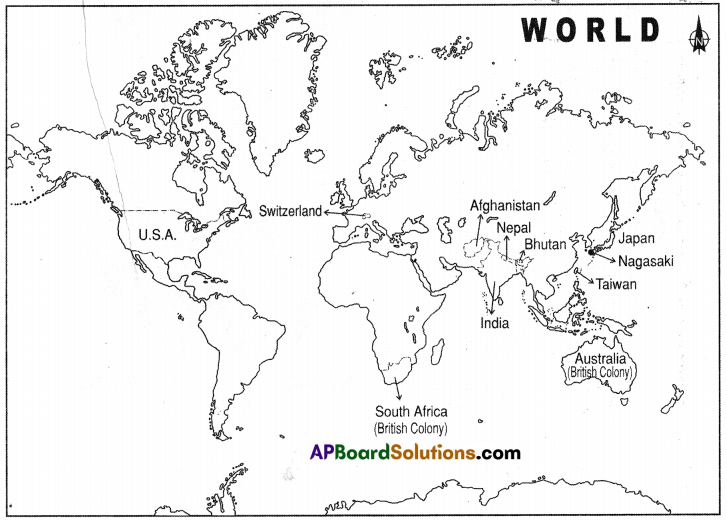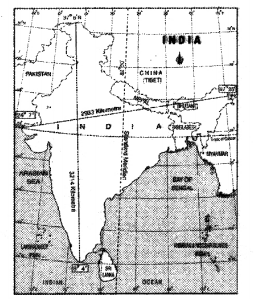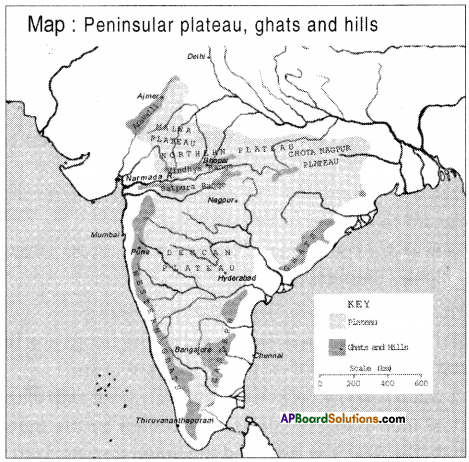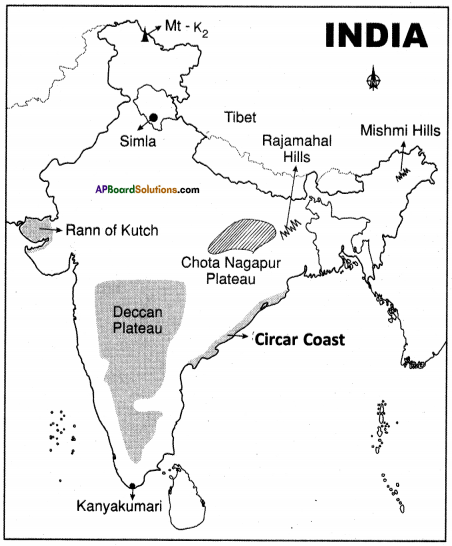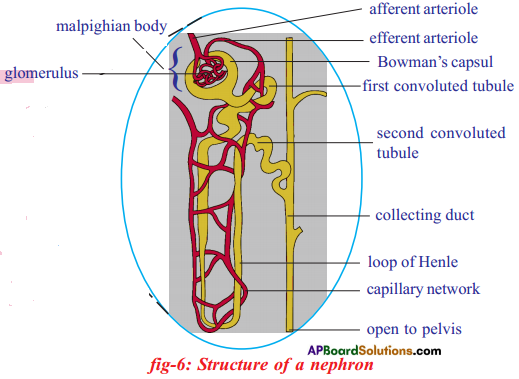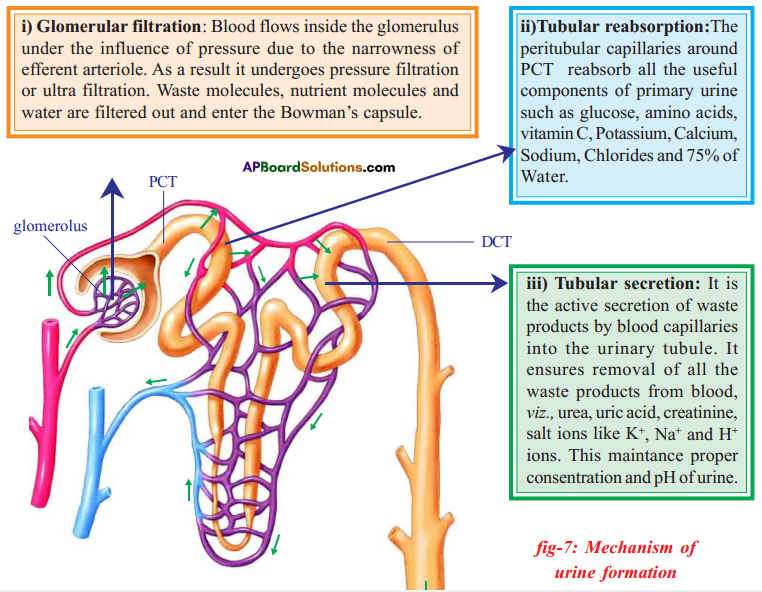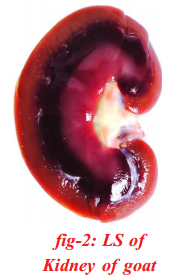AP State Board Syllabus AP SSC 10th Class Social Studies Important Questions Chapter 6 The People.
AP State Syllabus SSC 10th Class Social Studies Important Questions 6th Lesson The People
10th Class Social 6th Lesson The People 1 Mark Important Questions and Answers
Question 1.
How is sex-ratio calculated?
Answer:
Sex ratio can be calculated with the number of females per 1000 males in the population.
![]()
Question 2.
As 2011 Census, the population has increased to 121 crores approximately in India. Write any two reasons for it.
Answer:
- Early marriages.
- Illiteracy.
- Superstitions.
- Advancement in Medical Science.
Question 3.
Give the main reason for decreasing the death rate during the last decade in India.
Answer:
- Decline in the death rate is due to effective control of dreadful epidemic diseases through the advancement of medical technology and the health-care delivery system.
- Spread of education, development of science and technology and effective use of the resources have given greater scope and prospects for sustainability.
Question 4.
Observe the following table and answer the questions a, b, c and d.
Male, Female Literacy rate in India.
| Year | Female Literacy | Male Literacy | Literacy rate |
| 1961 | 15.35% | 40.45% | 28.30% |
| 1971 | 21.97% | 45.96% | 34.45% |
| 1981 | 29.76% | 56.38% | 43.57% |
| 1991 | 39.29% | 63.13% | 52.21% |
| 2001 | 54.67% | 75.26% | 64.84% |
| 2011 | 65.46% | 82.14% | 74.04% |
(a) By what percentage is male literacy more than that of female in 2011?
Answer:
Male literacy is more than that of female in 2011 is 16.68%.
(b) What information does the above table give us?
Answer:
The above table gives us the information about male and female literacy rate in India during 1961 – 2011.
(c) In which period is the literacy rate increased more?
Answer:
The literacy rate increased more during the period 1991 – 2001.
(d) How do you understand female literacy?
Answer:
- When compared with male literacy, female literacy rate is low.
- In 1961 female literacy is very low. But it is an increasing level. During 1991 – 2001 female literacy is highly increased.
![]()
Question 5.
Observe the given bar graph and answer the questions.

(a) What does the above graph tell about?
Answer:
The above graph tells about India Population – Sex Ratio (1951 – 2011).
(b) What does the change in sex ratio show when compared with 1991 year to that of 2011 year ?
Answer:
The sex ratio is increased (929 to 940)
(c) What do you mean by sex ratio?
Answer:
Sex ratio is the number of females per 1000 males in the population.
(d) Mention the reason behind the low female population in India.
Answer:
- Gender discrimination
- Illiteracy
- Lack of Medical facilities
- Not providing nutritious food.
- Parental attitude
Question 6.
What processes influence the change in population size?
Answer:
The processes that influence the change in population size are
- births
- deaths
- migrations
Question 7.
Observe the following table and answer questions a and b.
Census 2011 – Data related to literacy rate in Kerala and Bihar
| Rank | State | Literacy rate | Male literacy rate | Female literacy rate |
| 1 | Kerala | 94% | 96% | 92% |
| 2 | Bihar | 64% | 73% | 53% |
(a) What is table about?
Answer:
The table is about literary rate in Kerala and Bihar considering census 2011.
(b) Mention one reason for low literacy rate among the women.
Answer:
Reasons for low literacy rate among the women:
- Following traditions and conventions
- Less priority to girl education
![]()
Question 8.
How much percent of the working people in India are in the unorganised sector?
Answer:
Ninety-two percent of the working people in India are in the unorganised sector.
Question 9.
What is important regarding population study?
Answer:
It is important to understand population numbers, its distribution and characteristics that provide the basic background for understanding and appreciating the other aspects.
Question 10.
What does the Census of India provide?
Answer:
The Census of India provides us with infor-mation regarding the population of our country.
Question 11.
What is a census?
Answer:
A census is a procedure of systematically acquiring and recording information about the members of a given population.
Question 12.
Who collects the census?
Answer:
A central government institution, the Census of India, organizes the collection and record¬ing of this information.
Question 13.
What does the age structure of a population refer to?
Answer:
The age structure of a population refers to the number of males and females in different age groups in a country.
Question 14.
How can we group the population of a nation?
Answer:
The population of a nation is generally grouped into three broad categories:
- Children (Below 15 years),
- Working-age (15-59 years),
- Aged (Above 59 years)
![]()
Question 15.
Who gets retirement pension?
Answer:
Those who work and retire in organised sector may get retirement pension.
Question 16.
What is sex ratio?
Answer:
Sex ratio is the number of females per 1000 males in the population.
Question 17.
What does the sex ratio indicate?
Answer:
The sex ratio indicates a hidden form of discrimination.
Question 18.
What does medical research show?
Answer:
Medical research shows that given similar circumstances girl children survive much better than boys.
Question 19.
What does the census show regarding child births? Give reasons for that.
Answer:
The census shows that in the age group 0-5, the number of girls who survive is much lower than boys. This can only happen if there is some discrimination in their care and nutrition otherwise the physical chance of survival is better for girls.
Question 20.
Which tend towards unequal sex ratios? Give reason for that.
Answer:
Regions that have unequal gender relations that favour the males and discriminate against the females tend towards unequal sex ratios. This can happen even though they have high incomes.
Question 21.
Give an example of the state which has positive sex ratio.
Answer:
Kerala.
Question 22.
What are the reasons for female foetus infanticide?
Answer:
Due to the preference for male children parents may decide to abort female child before birth. Many adults consider female children as a burden.
![]()
Question 23.
Write about women’s education.
Answer:
Women’s education has been a powerful force in reducing discrimination against women. There is definitive evidence that women’s literacy and schooling reduce child mortality and work against the selective neglect of the health of girls.
Question 24.
Who is treated as literate?
Answer:
According to the Census of 2011, a person aged 7 years and above who can read and write with understanding in any language is treated as literate.
Question 25.
What is literacy?
Answer:
Literacy: Literacy is key for socio-economic progress.
Question 26.
Write an account of literacy rate.
Answer:
At independence in 1947,12% of the population was literate. In 2001, it was 64.84%.lt grew to 74.04% by 2011. However, the 2011 Census shows that there is a wide disparity in literacy rates for men (82.14%) and women (65.46%).
Question 27.
Write the equation of population change.
Answer:
Population change (absolute numbers) = (Population at later date) – (Population at earlier date)
Question 28.
Write the equation of population change in a place.
Answer:
Population change in a place = (number of births + number of in-migrants) -(number of deaths + number of out-migrants). A positive number means the population has increased by that number. A negative number shows it has decreased by that number.
![]()
Question 29.
What is birth rate?
Answer:
Birth rate is the number of live births per thousand persons in a year.
Question 30.
What is death rate?
Answer:
Death rate is the number of deaths per thousand persons in a year.
Question 31.
What is the change in birth rate and death rate at present?
Answer:
There has been the rapid decline in death rates but till recent times, birth rates were not decreasing substantially.
Question 32.
Why did the famines decline after 1900?
Answer:
After 1900 famines declined because of famine relief, movement of grain, ration shops and an active public voice in a democracy.
Question 33.
Why are some children forced to work?
Answer:
Some children are forced to work because of economic conditions.
Question 34.
Why does the population size change?
Answer:
The population is dynamic. The numbers, distribution and composition of the population are always changing. This is because of the interaction of the three processes:
- births,
- deaths and
- migrations.
Question 35.
What is the change in population size? How it can be expressed?
Answer:
The change in the size of a population is the difference in the number of inhabitants of a country/territory during a say during the last ten years. Such a change can be expressed in two ways, (1) as absolute numbers, or (2) as a percentage change.
![]()
Question 36.
Write some reasons for population growth in India.
Answer:
- High birth rate
- Low death rate
- Improvement in medical facilities.
- High fertility rate in young couples.
- A decline in fancies
- Illiteracy.
Question 37.
What are the factors that influence population densities in states like Assam?
Answer:
Assam and most of the peninsular states have moderate population densities. Hilly, dissected and rocky nature of the terrain, moderate to low rainfall, shallow and less fertile soils have influenced population densities in these areas.
Question 38.
Why do the plains have very high density of population?
Answer:
The northern Plains and the plain in the south have, high to very high population, densities, because of the flat plains with fertile soils and abundant rainfall.
10th Class Social 6th Lesson The People 2 Marks Important Questions and Answers
Question 1.
Read the following paragraph.
A distressing aspect of gender bias in India that shows little sign of going away is the preference for boys over girls. One of the worst manifestations of this pro-male bias is the relatively high mortality rates of girls compared with boys. Many families consider female children as a burden. Women’s education has been a powerful force in reducing discrimination against women.
“Due to the difference in sex ratio, what would be the impact on society ?” Explain.
Answer:
- Female population will decrease.
- In future male population may not get marriages.
- Family system may collapse.
- Gender bias may increase in the society.
- The problem of criminality in our society will increase.
![]()
Question 2.
Read the following paragraph and answer the given question.
India is one of the most densely populated countries of the world. The population density of India in the year 2011 was 382 persons per sq km. Densities vary from 904 persons per sq km in West Bengal to only 13 persons per sq km in Arunachal Pradesh.
What are the reasons for high population density in West Bengal and low population density in Arunachal Pradesh?
Answer:
- West Bengal is located in fertile deltas of River Ganga.
- It supports agriculture and industrial development and suitable for living.
- Arunachal Pradesh is in hilly terrain and covered by snow in vast areas.
- So, it is not suitable for human habitation and have low density of population.
Question 3.
“Sex ratio is the number of females per 1000 males in the population. In 1951 there were 946 females per 1000 males in India. In 1991 there were 929 per 1000 males and 933 in 2001 and 940 in 2011 respectively.”
Draw a table based on the information given below:
Answer:
| S.No. | Year | Sex ratio |
| 1. | 1951 | 946 |
| 2. | 1991 | 929 |
| 3. | 2001 | 933 |
| 4. | 2011 | 940 |
Question 4.
Study the following graph and answer the given questions.
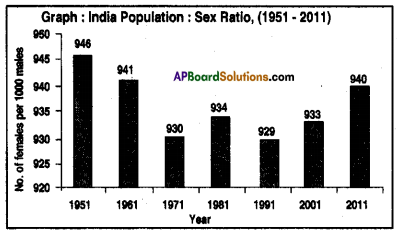 a) In which year, the highest sex-ratio was recorded?
a) In which year, the highest sex-ratio was recorded?
Answer: 1951.
b) Identify the reasons for low sex-ratio in India.
Answer:
- Gender Bias.
- Superstitions
![]()
Question 5.
People often talk of population growth in alarmed tones. Why?
Answer:
- It population increases, availability of infrastructural facilities will become less.
- It may also leads to food shortage.
- Deforestation and global natural destruction is one of the problem.
- A huge population causes huge demands like foods, water, clothes etc. As per the population growth the trees were cut down for construction of the house and factories.
- Due to this natural resources will be depleted.
Question 6.
Write your observations about the population growth in india, from the graph given below:
 Answer:
Answer:
I observed the following reasons:
- Population census have been taken for every 10 years.
- From the year 1921 onwards population increases very highly due to the following reasons.
- Improved medical facilities.
- Declination of the impact of famines.
The other factors which are responsible for high growth rate of population:
- Contact with western nations, in particular Great Britain, brought with it western medicine.
- The infant mortality rate dropped.
- The life expectancy rose.
- As the largest democratic nation in the world, India has been unable to force population controls.
- High fertility rate due to early marriages.
- Some religious superstitions, etc.
![]()
Question 7.
Observe the following graph and write a paragraph analyzing it.
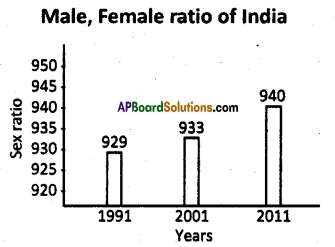 Answer:
Answer:
- The bar graph is about male, female sex ratio of India.
- It gives the sex ratio in 1991, 2001 and 2011.
- Sex ratio is increasing from 1991 to 2011.
- The sex ratio in India is a cause of concern. Ever since independence, it has been constantly decreasing and with 940 in 2011 it is also alarming.
Question 8.
Prepare two slogans on ‘Control of popula-tion growth’.
Answer:
- Slogan should reflect the theme of controlling population growth.
- Slogan should be divided around two equal halves.
Examples:
- More Population – More problems.
- Control the Population – Enjoy nature.
- Small family – Happy family.
- Reduce the crowd – Have a better future.
Question 9.
Give some examples of gender discrimination.
Answer:
Women and girls in particular face unequal opportunities for education and development. In the most basic needs of nutrition, child care and health also they are discriminated against – they get less of these things than males. This can happen even within the same family. This discrimination is not always obvious. Nor is it accepted.
![]()
Question 10.
What is rate or pace of population increase?
Answer:
The rate or the pace of population increase is important. It is studied in per cent per annum, e.g.: a rate of increase of 2 per cent per annum means that in a given year, there was an increase of two persons for every 100 persons in the base year. This works like compound interest. This is referred to as the annual growth rate. India’s population has been steadily increasing.
Question 11.
Describe the categories of the working population.
Answer:
The Census of India, groups the working population into four categories. Cultivators are farmers, who farm or supervise the land that they own or take on rent. Agricultural labourers are those who work on another’s farm for wages in cash or kind. Workers in household industries would be those who are manufacturing or repairing some product at home such as dehusking of paddy, bidi workers, potters, weavers, repair of footwear, manufacture of toys, matches, etc. Other workers would be those who are employed in factories, trading, casual labour and all other occupations.
Question 12.
Why did the birth rate remain high for such a long period?
Answer:
One set of reasons has to do with what has happened in the past. If in the overall population the percentage of young people is high, then in the coming years they would grow up, get married and have children. The total number of such children added would be high because we began with a population with a large number of young people.
The other reason is the number of children that couples wish to have. This in turn is related to how many children survive, what social security people have and the preference of male child in society.
![]()
Question 13.
Prepare a rough bar diagram using the following information.
| Area | Haryana | Punjab | A.P | Kerala | USA |
| Sex Ratio | 870 | 880 | 970 | 1040 | 1050 |
Answer:

Question 14.
Read the following paragraph and comment on it.
The Census of India provides us with information regarding the population of our country. A’ census is the procedure of systematically acquiring and recording information about the members of a given population. Once in ten years information is collected about all people living in India. The people who do this survey go from house to house and find out the number of people living in every house in every village,town and city. This census provides us with a lot of information such as how old people are, their occupation, houses, education, religion, etc. The Registrar General & Census Commission of India, organises the collection and recording of this information.
Answer:
A census is the procedure of systematically acquiring and recording information about the members of a given population. It is a regularly occurring and official count of a particular population. In India this information is collected once in ten years. This census provides us a lot of information. The census is conducted by the Registrar General and Census Commission of India.
Question 15.
It is noted that within India certain parts like Kerala have a positive sex ratio. How can you appreciate it?
Answer:
- Kerala have a positive sex ratio while some other states are extremely biased against women.
- Women’s education has been a powerful force in reducing discrimination against women.
- Women’s literacy and schooling reduce child mortality and work against the selective neglect of the health of girls.
- As Kerala worked on these front, remaining states need to follow its footsteps.
Question 16.
“Over population creates many problems” Do you support this statement? Write in your own words.
Answer:
- The number of non-working people increases.
- Per capita income decreases with increase in population.
- Production has to be increased to provide facilities like houses, educational institutions, health centres, transport, etc., to the increasing population.
- There is a danger of occurrence of famine if sufficient food is not produced.
10th Class Social 6th Lesson The People 4 Marks Important Questions and Answers
Question 1.
Answer the following of questions based on the graph given below.

- From which year did the population increase continuously?
Answer:
From the year 1921 the population increased continuously. - What is the present population of India?
Answer:
The present population of India is 121 crores. - In which decade is the population growth less?
Answer:
The population growth is less in the decade 1911-21. - For how many years is the census being taken in India?
Answer:
The census is being taken in India for ten years once.
![]()
Question 2.
Observe the following graph and answer the questions that given below.
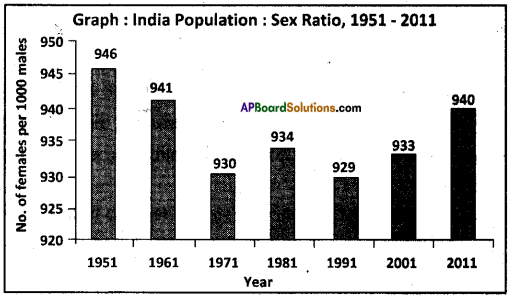
- How many times census was taken up after independence ?
Answer:
7 times. - What do you mean by sex ratio ?
Answer:
Sex ratio is the number of females per every 1000 males in the population. - Give two reasons for low sex ratio.
Answer:- Traditionally our society is male-dominated. Gender discrimination is one cause.
- Women are getting inequal opportunities for education and development.
- In which year the sex ratio is better ?
Answer:
1951
Question 3.
Observe the graph given below and answer the following questions.
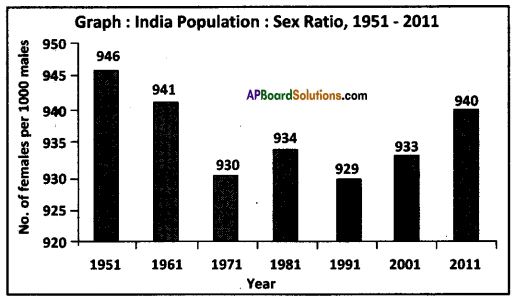
- What does the above graph explain?
Answer:
It explains the Sex ratio of India from 1951 to 2011. - In which year, the least sex ratio is recorded ?
Answer:
The least sex ratio recorded in 1991. - How was the sex ratio calculated?
Answer:
The sex ratio is calculated as the number of females per 1000 males in the population. - How many times the female number is recorded more than 935?
Answer:
3 times.
![]()
Question 4.
Study the graph and answer the following.

- In which year, did the population decrease?
Answer:
1921 - For how many years, census have been held regularly?
Answer:
10 years - Why was the population of India increasing after independence?
Answer:
Improved medical facilities
Declination of the impact of famines. - What problems would arise with the population explosion?
Answer:- Stress on environment.
- Unemployment.
- Scarcity of resources.
- Lock of food.
Question 5.
Read the text given below and write your opinion.
In India, 103 female babies are born as against 100 male babies. However, more female babies die than the male babies. The census shows that in the age group 0-5 years, the number of girls who survive is much lower than boys. This can only happen if there is some discrimination in their care and nutrition because otherwise the physical chance of survival is better for girls.
Answer:
More female babies are born, yet at the age of 0-5 years the number of girls who survive is much lower than boys.
The following reasons give us why the sex ratio has been declining.
- Most of the women are illiterate, so they are unable to realise the importance of a girl child.
- Most of the families in India are patriarchal, so men dominate the women and force them to abort against for a girl child.
- Most of the families give importance for a boy child to increase their clan.
- Even though they have high income, parents give less importance for girl child in all spheres.
![]()
Question 6.
Observe the following graph.
 Now answer the following questions.
Now answer the following questions.
- Which year has the least number of females?
Answer:
In the year 1991, the number of females is least. - What do you mean by Sex ratio?
Answer:
The number of females per 1000 males is called sex ratio. - Since 1951, what changes do you observe in Sex ratio?
Answer:
During 1951-1971 the sex ratio is decreasing whereas 1991 onwards it has been increasing gradually though the literacy rate in 1951 is low, the sex ratio is high. - What is to be done to prevent a decrease in female number?
Answer:
Concept of equality between male and female is to be developed by organizing campaigns.- The laws related to pre-natal diagnostic tests should be brought out.
- They should be implemented in true spirit.
Question 7.
What is the influence on society when female percentage decreases in sex ratio?
Answer:
Influence on society when female percentage decreases in sex ratio:
- Marriage related problems.
- Crimes related to sexual assault increase.
- Kanyasulkam may revive.
- Gender discrimination reduces.
- Mankind struggles to survive.
- Population decreases.
- Family relations may be affected
- Human relations get disturbed.
- Importance to women – increased.
![]()
Question 8.
Plot the below information on a bar-graph. Write your observation.
Table : India Population: Sex Ratio 1951 – 2011
| SI. No. | Year | No. of females for 1000 males |
| 1. | 1951 | 946 |
| 2. | 1961 | 941 |
| 3. | 1971 | 930 |
| 4. | 1981 | 934 |
| 5. | 1991 | 929 |
| 6. | 2001 | 933 |
| 7. | 2011 | 943 |
Answer:
- The above graph explains the Sex Ratio of India from 1951 to 2011.
- During 1951 -1971 the Sex Ratio is decreasing whereas in 1991 onwards it has been increasing gradually though the literacy rate in 1951 is low, but the Sex Ratio is high.
- The least Sex Ratio recorded in 1991.
- The female ratio is very low in India due to gender discrimination, illiteracy, lack of medical facilities, not providing nutritious food, parental attitude etc.
Question 9.
Read the given paragraph and comment.
We often hear people talk of population growth in alarming tones. These people are often literate and talk about others not benefitting because there are too many people who have to share very few resources.
Answer:
According to the given paragraph, the population growth affects many ways people should aware of this and the literate people talk about the benefits share of resources is not balancing. Very few people are using more resources whereas many people are using very less resources.
Countries like USA are using more natural resources though its population is less than 5% of the world population. In India, it is less than 16% of the population of the world is using less natural resources. In India population is steadily increasing. If population increases in this way, one day India would be the first in world population. Population is not a curse to the country development, it is a boon for the development of the country. People in any country can be divided into three categories. They are skilled, semi-skilled and unskilled. The Government has to utilise the services of the skilled for the nation’s development. The semi skilled should be made skilled. The unskilled should be provided with some training and so they would be doing some sort of productive work which would be strengthening Gross Domestic Product. Equal distribution of resources should be the target of the Government. The underdeveloped countries should focus on improving the qualities of work force. So population is not a problem. It’s a boon.
![]()
Question 10.
Observe the population pyramids and answer the questions.
 a) What are group in India has the largest percentage of people?
a) What are group in India has the largest percentage of people?
b) What is the total percentage of the population in the 90 and above age group?
c) What is the total percentage of the population between 0-14 age group?
d) Based on the population pyramid given above, how do you think.the population of the India will grow? Will it grow quickly or slowly? Why?
Answer:
a) 10-14 years.
b) 0.1 % .
c) 4.7 + 4.7 + 4.9 + 4.3 + 4.3 + 4.4 = 27.3
d) Quickly. Because young pouplation currently is high in number. So for future the population of the India will grow.
Question 11.
Read the following paragraph and write your opinion on it.
The third component of population change is migration. Migration is the movement of people across regions and territories. Migration can be internal (within the country) or international (between the countries). Internal migration does not change the size of the population but influences the distribution of population within the nation. Migration plays a very significant role in changing the composition and distribution of the population.
Answer:
- Migration is the third component of population growth.
- Migration plays a significant role in changing the composition and distribution of the population.
- Migration is the movement of people from one region to another.
- Migration is both internal and international.
- Internal migration does not affect the size of the population but changes the composition of the population.
- Internal migration includes movement of people from rural to urban and from urban to rural.
- Whereas international migration changes the size of the population.
Question 12.
Read the following paragraph and interpret.
Think of various ways in which the government should have special schemes for different groups. Examples could be midday meal schemes; Anganwadi programmes, etc. Why are they necessary?
Answer:
- The given paragraph focuses on special schemes suggestive for the sake of the poor and the needy people.
- According to my opinion the midday meal scheme came out with the initiation of the Su¬preme Court of India.
- Many of the poor students are not attending schools in the afternoon. Their parents may go to fields for work.
- As the people are poor many programmes are to be taken up. In many of the schools it is not functioning well.
- They should be provided with sufficient mechanism so as to make them lead their lives with satisfaction.
- Whatever the programme or scheme taken up, it should be worked out in a right way with the true spirit.
- The objective is not fulfilled in many of the schemes.
- How many schemes are running is different from how they are running. So implementation is important.
![]()
Question 13.
Read the following paragraph and write your comments.
Women’s education has been a powerful force in reducing discrimination against women. There is definitive evidence that women’s literacy and schooling reduces child mortality and work against the selective neglect of the health of girls.
Answer:
- It is very important to educate the girls. Their literacy and schooling should be increased so as to bring social change with regard to discrimination against women.
- My comments on this paragraph are that the village people are mostly illiterates and they don’t want to send their daughters to schools and colleges for education.
- In this decade, we observe that many of the parents in villages changed their notions and started sending them even to cities and towns and encouraging in getting higher education.
- An educated mother can take care of both male and female child in a better way.
Question 14.
Read the following paragraph and interpret.
Why did the birth rate remain high for such a long period? One set of reasons has to do with what has happened in the past. If in the overall population, the percentage of young people is high, then in the coming years they would grow up, get married and have children. The total number of such children added would be high because we began with a population with a large number of young people.
Answer:
- The given paragraph says that the young people are more in number and in due course of time, they get married and have children.
- This adding of population is going on over the period.
- There are so many reasons for high birth rate in our country.
- Early marriages also cause for population growth. The family planning programmes are not successfully implemented.
- They understand that they may not provide sufficient food, clothes, education and health facilities to their children.
- Awareness programmes should be initiated among the people.
- People also should participate in the campaign. Everyone should take responsibility. Increase in population is not the problem of the nation but it affects the lives of the people.
Question 15.
Observe the following graph.
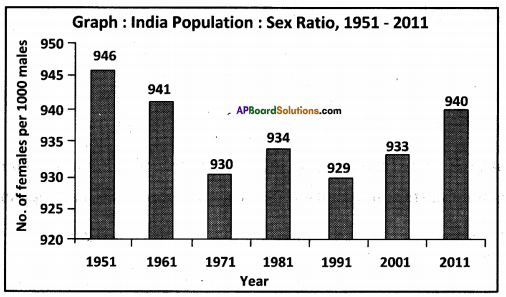 Now answer the following questions.
Now answer the following questions.
- What is the graph about?
Answer:
This graph is about sex ration of Indian Population during 1951-2011. - In which year is the least sex ratio recorded?
Answer:
The least sex ratio is recorded in 1991. - How often does the Census take place?
Answer:
Once in ten years. - How many times it is recorded less than 940?
Answer:
It is recorded four times (1971,1981,1991,2001). - What do you mean by sex ratio?
Answer:
Sex ratio is the number of females per one thousand males in the total population. - From which year onwards is sex ratio constantly increasing?
Answer:
It is increasing constantly from 1991. - In which year the ratio is high?
Answer:
The ratio is high in 1951.
![]()
Question 16.
Observe the graph and describe it.
 Answer:
Answer:
- The above graph depicts the fertility rate in India.
- The fertility rate is nothing but total births per women.
- The fertility rate in India has been decreasing.
- That means the number of children a family wants is decreasing.
- In 1961, the fertility rate was 5.9 that means an average women is likely to bear five to six children.
- Now the outlook is completely changed.
- The present fertility rate as per 2011 census is 2.7.
Question 17.
What are the steps to be taken restrict the overgrowth of population in India?
Answer:
The following are the steps to be taken to restrict the over growth of population in India :
- Family planning measures should be implemented by the government.
- Child marriages must be stopped.
- Education should be provided to all women in the country.
- Family planning counselling centres must be maintained.
- Newly married couples should wait at least three years to get children.
- They should maintain 3 years gap between two children.
![]()
Question 18.
“Over population creates many problems”. Do you support this statement? Write in your own words.
Answer:
- The number of non-working people increases.
- Per capita income decreases with increase in population.
- Production has to be increased to provide facilities like houses, educational institutions, health centres, transport, etc. to the increasing population.
- There is a danger of the occurrence of famine if sufficient food is not produced.
Question 19.
Locate the following in the given map of India.
- Aila super cyclone affected the Delta Region.
Answer: Sunderban - Capital of Lakshadweep Islands.
Answer: Kavaratti - The density of population is very high in this state.
Answer: Bihar - The density of population is very low in this state.
Answer: Arunachal Pradesh - The highest populous state.
Answer: Uttar Pradesh - The lowest populous state.
Answer: Sikkim - Sardar Sarovar dam is constructed on.
Answer: Narmada River - The capital of Tamilnadu.
Answer: Chennai - Cardamom hills.
- The capital of West Bengal.
Answer: Kolkata
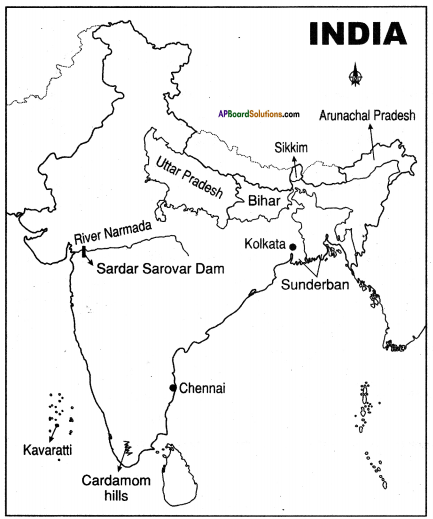
![]()
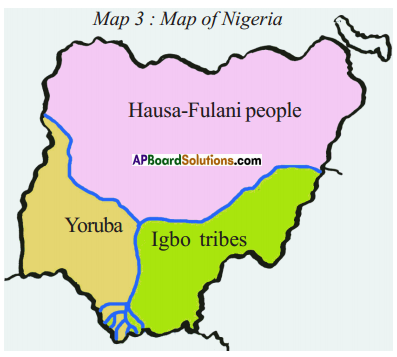 How were the British able to implement their ‘divide and rule’ policy in Nigeria?
How were the British able to implement their ‘divide and rule’ policy in Nigeria? Which aspect of the Communist approach do you think led to Mao’s victory? Explain.
Which aspect of the Communist approach do you think led to Mao’s victory? Explain. a) Which nation was ruled by the Manchu Dynasty?
a) Which nation was ruled by the Manchu Dynasty?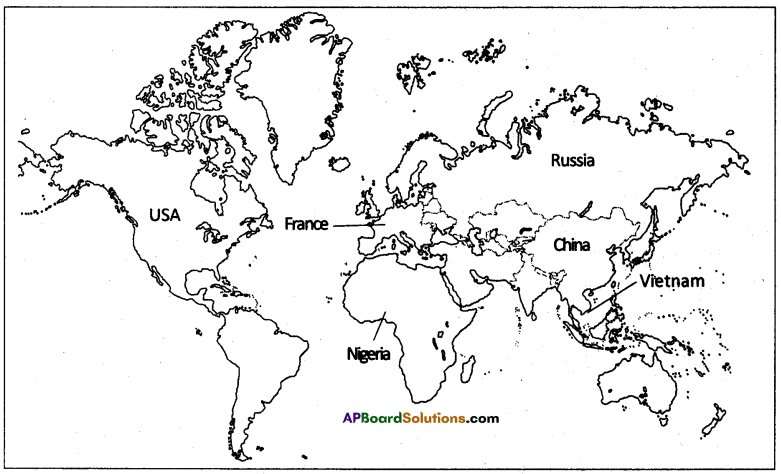



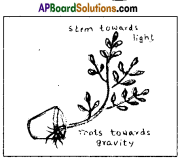


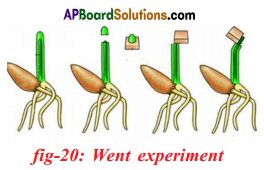
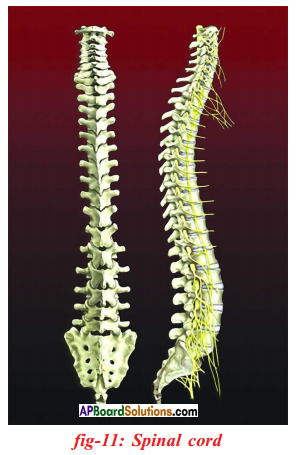

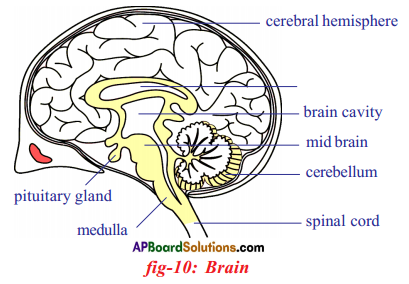
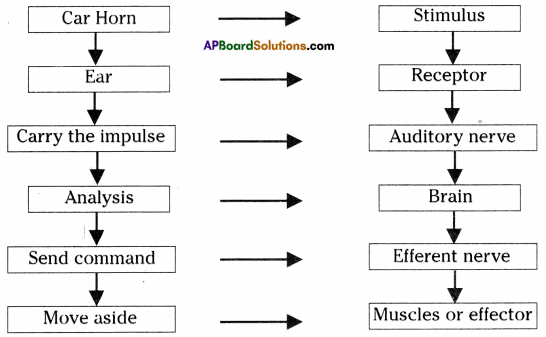
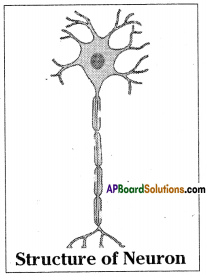 Required materials: A chart, twine thread, fevicol, sticker.
Required materials: A chart, twine thread, fevicol, sticker.

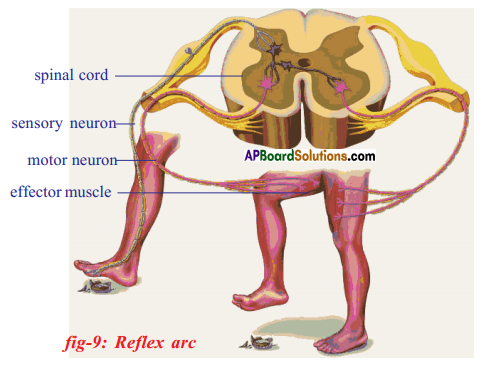

 Structural unit of the nervous system is the nerve cell or neuron. Neuron is highly specialised cell. Neurons carry impulses or messages. New nerve cells are not produced to replace the damaged or destroyed nerve cell. A neuron has three parts. They are
Structural unit of the nervous system is the nerve cell or neuron. Neuron is highly specialised cell. Neurons carry impulses or messages. New nerve cells are not produced to replace the damaged or destroyed nerve cell. A neuron has three parts. They are

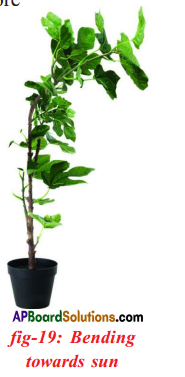
 Went interpreted these experiments as showing that the coleoptile tip exerted it’s effect by means of chemical stimulus rather than a physical stimulus such as an electrical impulse.
Went interpreted these experiments as showing that the coleoptile tip exerted it’s effect by means of chemical stimulus rather than a physical stimulus such as an electrical impulse.

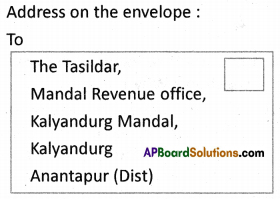


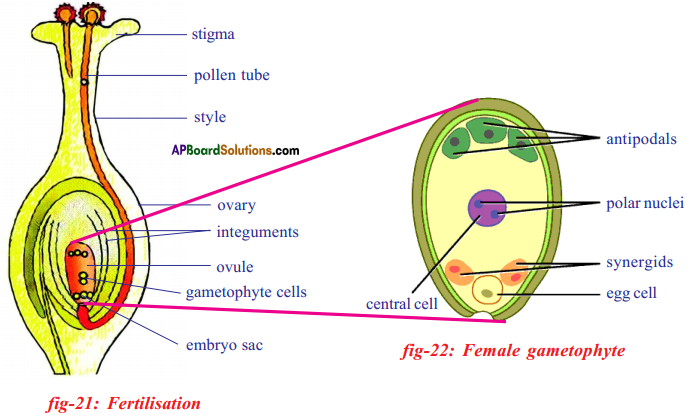


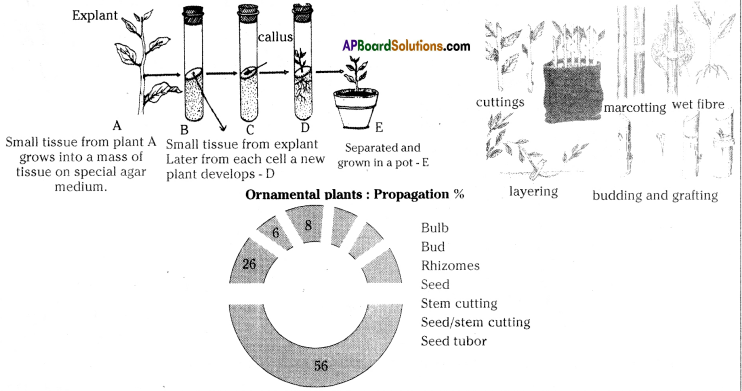
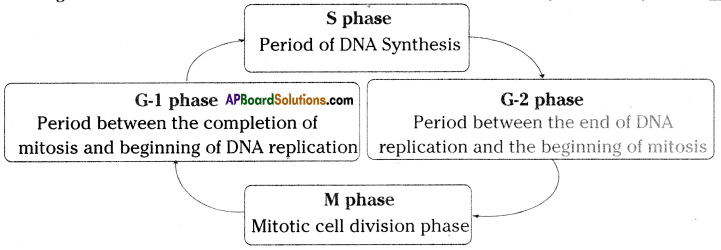
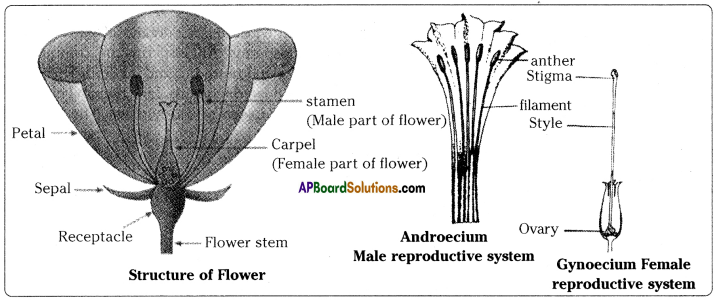


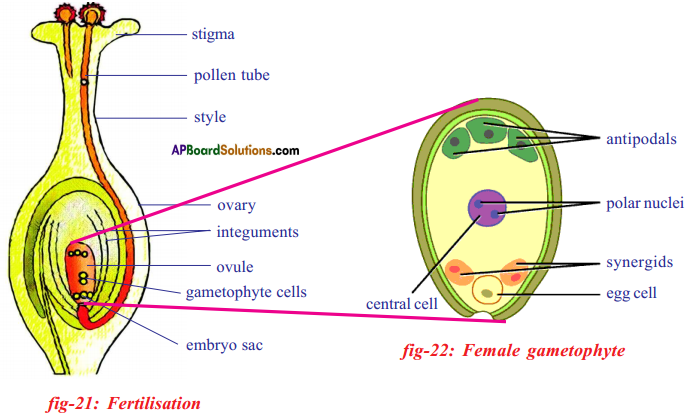
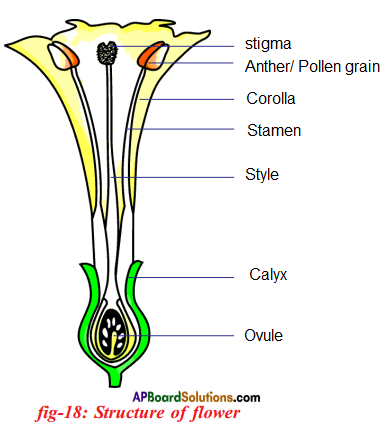 Functions of flower parts:
Functions of flower parts:
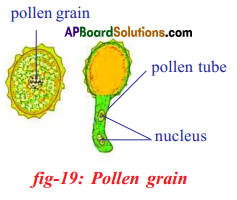


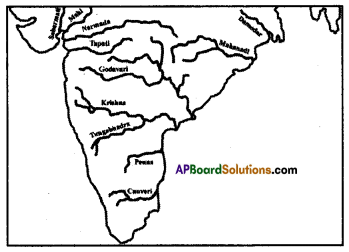

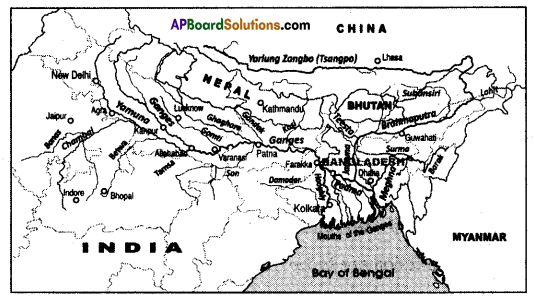 a) What is the River Ganga called in Bangladesh?
a) What is the River Ganga called in Bangladesh?

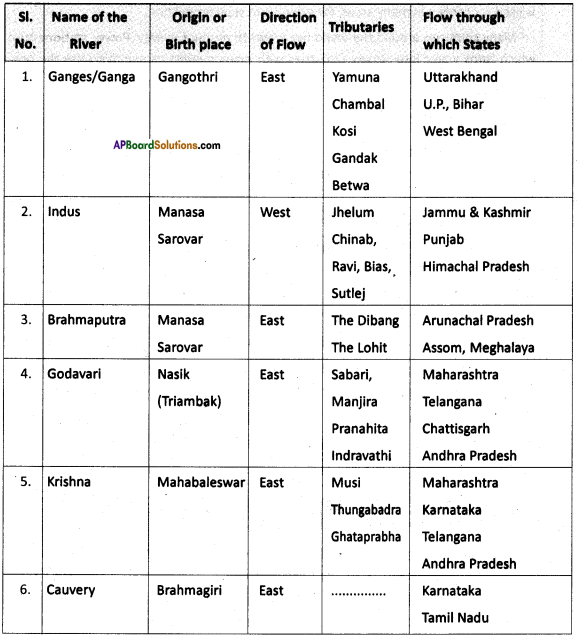
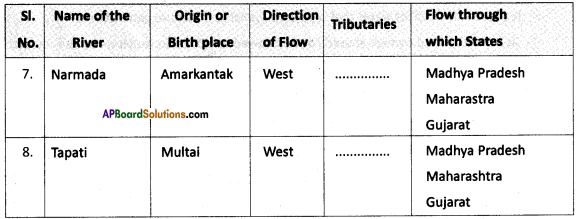
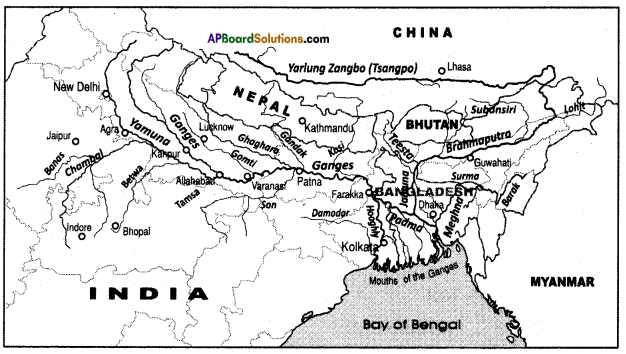 a) Mention any two tributaries of river Ganga.
a) Mention any two tributaries of river Ganga.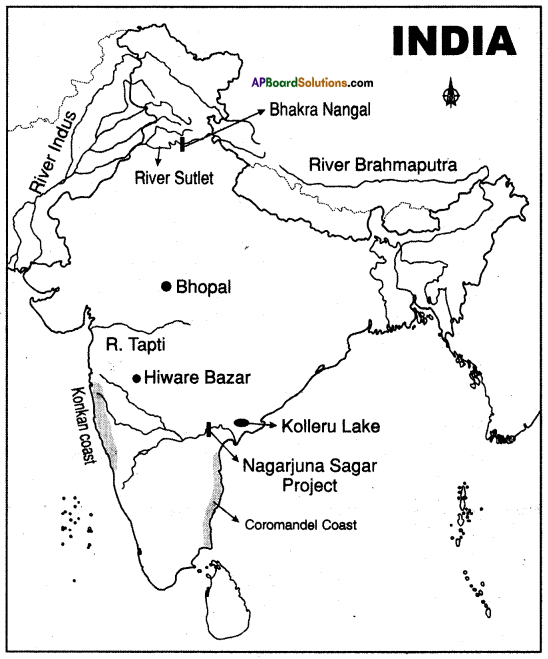
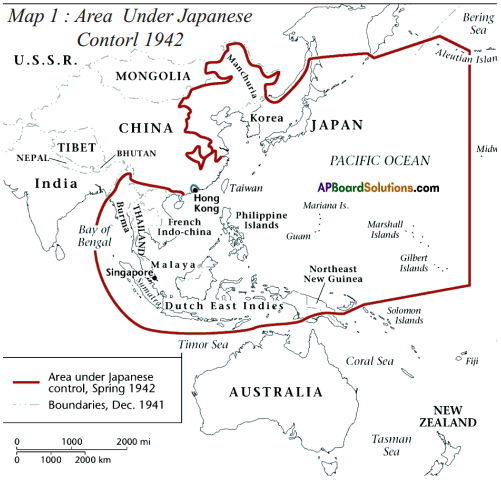 Name any one country that shared land boundary with India and not under the control of Japan.
Name any one country that shared land boundary with India and not under the control of Japan.
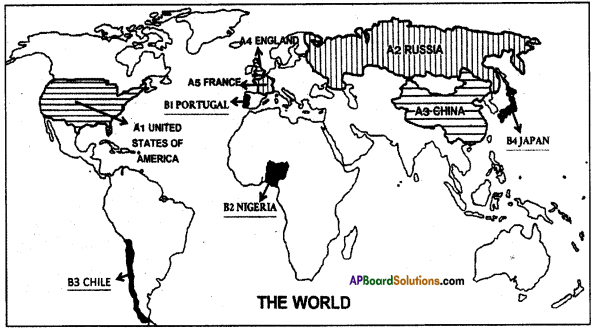 Question 3.
Question 3.

 Answer:
Answer: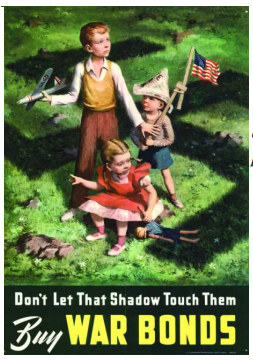
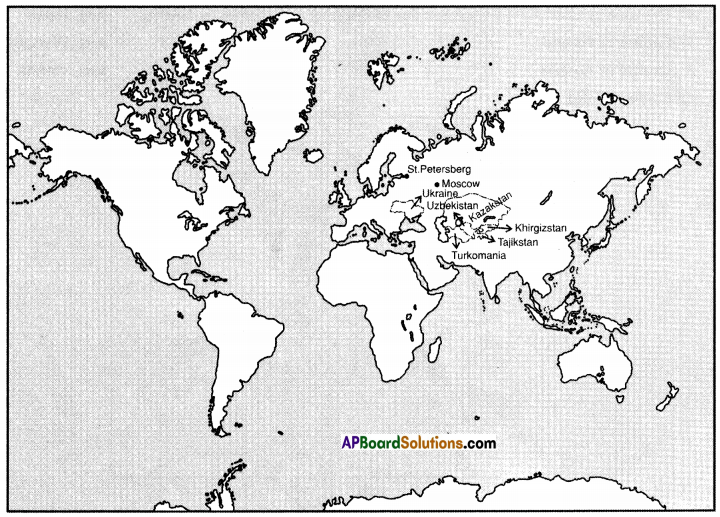
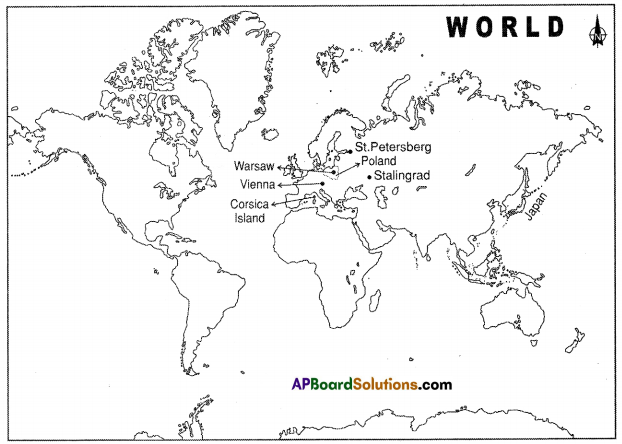
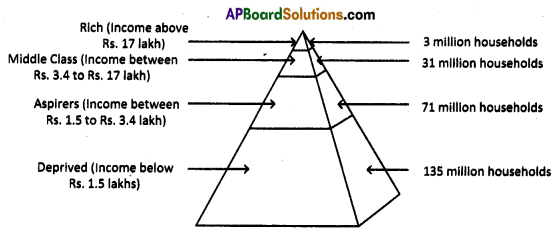 Write a brief note on the inequality in India based on the graph.
Write a brief note on the inequality in India based on the graph.
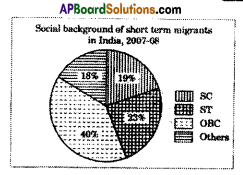

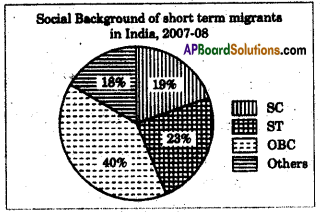 Answer:
Answer: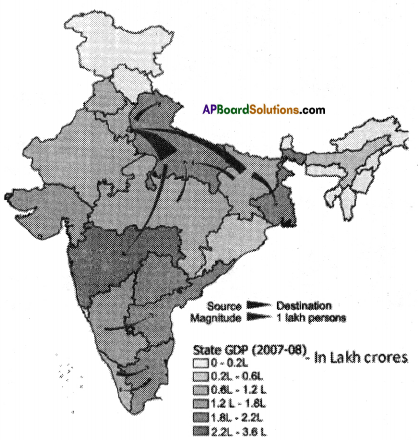
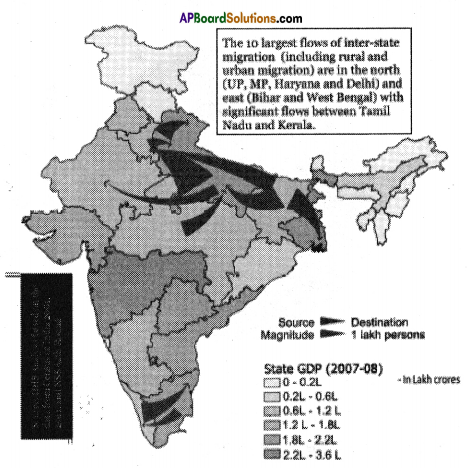 Answer:
Answer: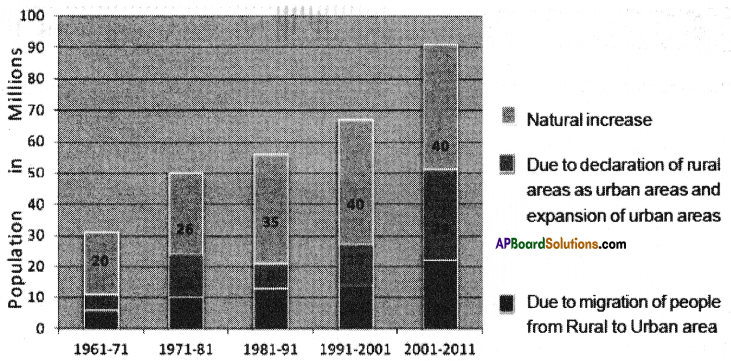

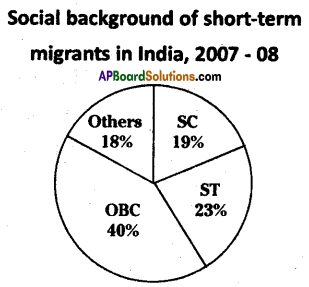 Write a paragraph analyzing it.
Write a paragraph analyzing it.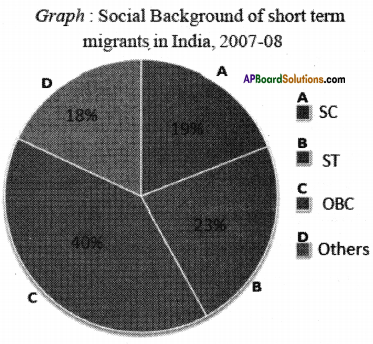

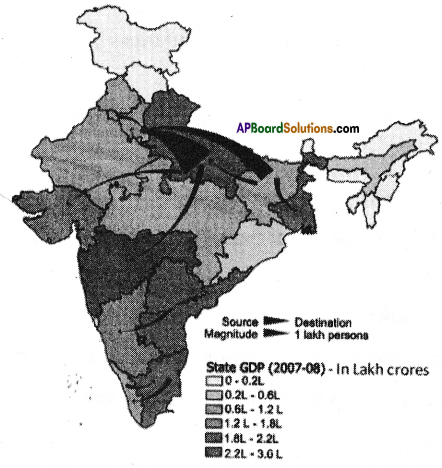
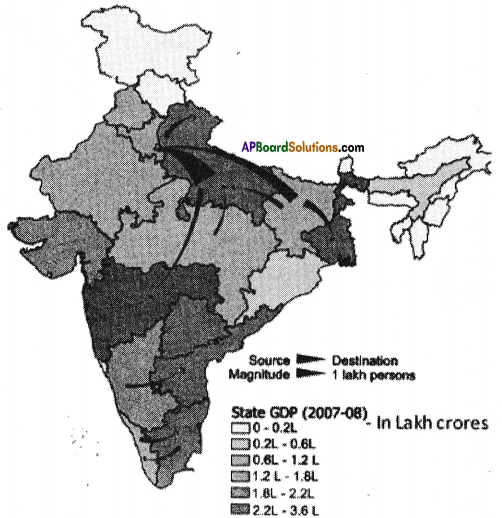
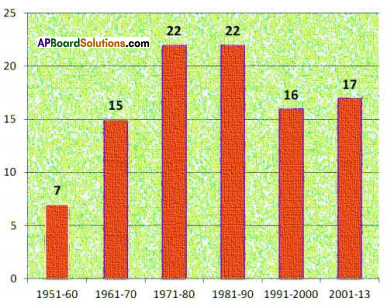
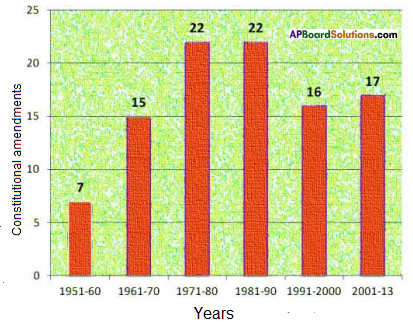
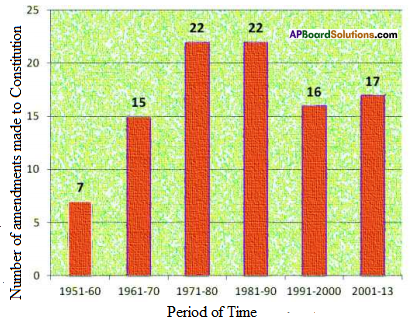
 Now answer the following questions.
Now answer the following questions.
